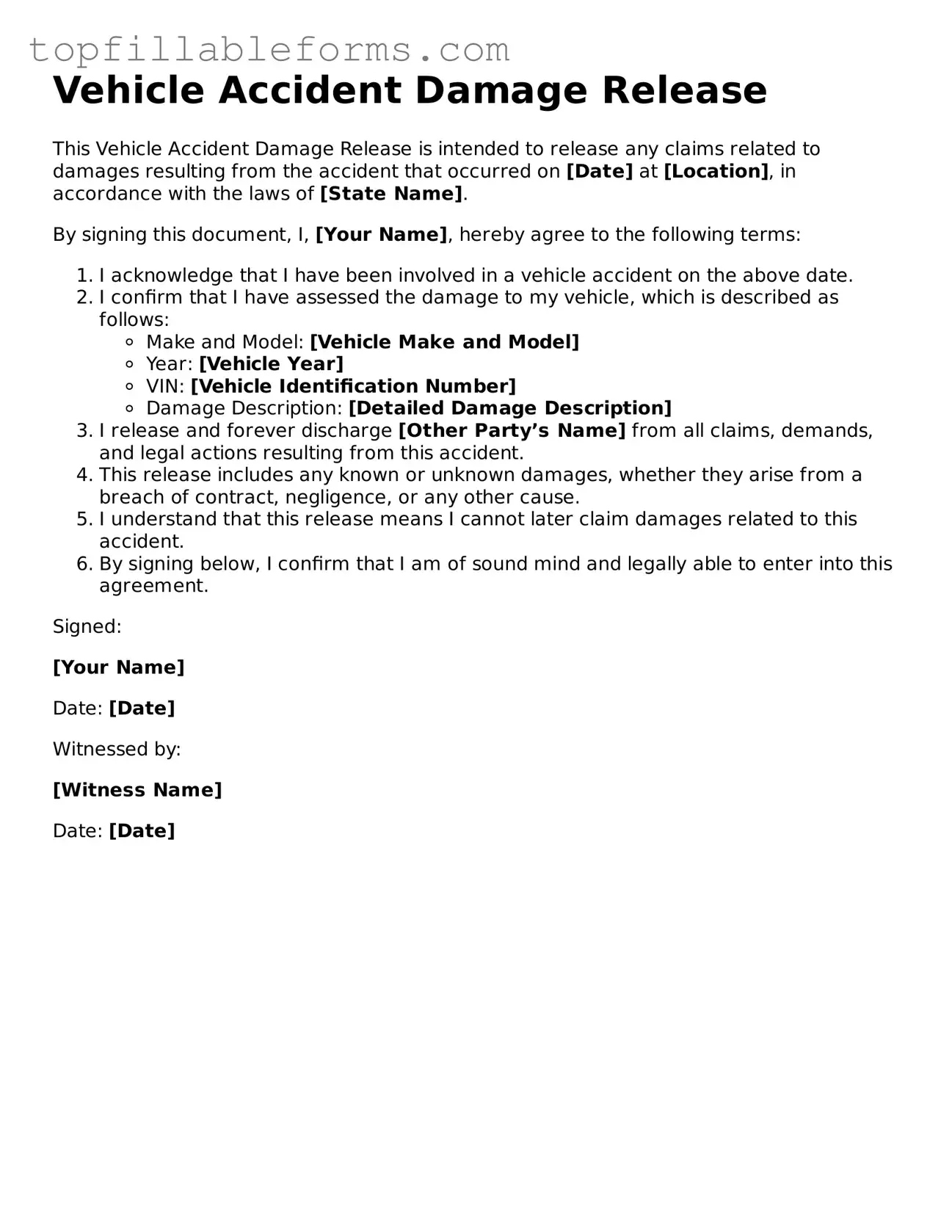Vehicle Accident Damage Release
This Vehicle Accident Damage Release is intended to release any claims related to damages resulting from the accident that occurred on [Date] at [Location], in accordance with the laws of [State Name].
By signing this document, I, [Your Name], hereby agree to the following terms:
- I acknowledge that I have been involved in a vehicle accident on the above date.
- I confirm that I have assessed the damage to my vehicle, which is described as follows:
- Make and Model: [Vehicle Make and Model]
- Year: [Vehicle Year]
- VIN: [Vehicle Identification Number]
- Damage Description: [Detailed Damage Description]
- I release and forever discharge [Other Party’s Name] from all claims, demands, and legal actions resulting from this accident.
- This release includes any known or unknown damages, whether they arise from a breach of contract, negligence, or any other cause.
- I understand that this release means I cannot later claim damages related to this accident.
- By signing below, I confirm that I am of sound mind and legally able to enter into this agreement.
Signed:
[Your Name]
Date: [Date]
Witnessed by:
[Witness Name]
Date: [Date]
